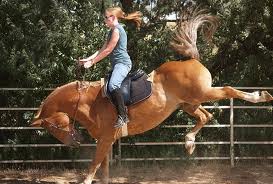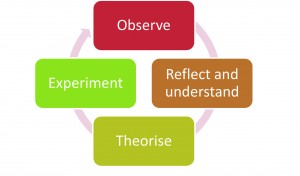Strategic Thinking: Bucking an Industry Norm
The working definition that I am using to explain strategic thinking is the following:
Strategic thinking is the discipline of noticing and responding to potential game-changers in order to have the advantage, even in an uncertain and chaotic business environment.
These game-changers are to be found both inside your organisation and outside, and it’s how you respond to them that’s important. In this articles I am inviting you to think about things you (and your competitors) may have accepted simply as features or characteristics of your industry but which, if overcome, could give you a real advantage. The example I am going to use is that of employee turnover. Why? Because two of the organisations I do work for are in industries where this type of fluidity is merely accepted as an industry norm.
Why should you try to buck such a norm in the first place? Because it is very, very costly. In most cases, these are hidden costs that are quite difficult to quantify, but let me illustrate the point.
Cost of Turnover
Let’s say that in the last 3 months you have lost 3 key employees who were earning in the region of R750 000 per year. If you calculate the costs to advertise, interview and hire new recruits, the cost of training those recruits, and the fact that they only deliver at about 50% of expectations in the first 3 months of employment, that turnover would conservatively cost your company in the region of R500 000 – and that cost comes straight off your bottom line. (I used the Drake Turnover Calculator to be found at https://au.drakeintl.com/clients/calculate/).
Strategic thinking is the discipline of noticing and responding to potential game-changers in order to have the advantage, even in an uncertain and chaotic business environment.
These game-changers are to be found both inside your organisation and outside, and it’s how you respond to them that’s important. In this articles I am inviting you to think about things you (and your competitors) may have accepted simply as features or characteristics of your industry but which, if overcome, could give you a real advantage. The example I am going to use is that of employee turnover. Why? Because two of the organisations I do work for are in industries where this type of fluidity is merely accepted as an industry norm.
Why should you try to buck such a norm in the first place? Because it is very, very costly. In most cases, these are hidden costs that are quite difficult to quantify, but let me illustrate the point.
Cost of Turnover
Let’s say that in the last 3 months you have lost 3 key employees who were earning in the region of R750 000 per year. If you calculate the costs to advertise, interview and hire new recruits, the cost of training those recruits, and the fact that they only deliver at about 50% of expectations in the first 3 months of employment, that turnover would conservatively cost your company in the region of R500 000 – and that cost comes straight off your bottom line. (I used the Drake Turnover Calculator to be found at https://au.drakeintl.com/clients/calculate/).
Let’s make the calculation a little more dramatic – as it is when you have high turnover in your sales force:
Let’s assume that these three employees were amongst your top salespeople, and that your company sells capital equipment – say heavy commercial vehicles that cost R2 million each. To the costs calculated previously you can add the following:
Now do the numbers!
Let’s assume that these three employees were amongst your top salespeople, and that your company sells capital equipment – say heavy commercial vehicles that cost R2 million each. To the costs calculated previously you can add the following:
- In my experience, on average it takes a new salesperson in this environment about 2 years to reach consistent satisfactory sales performance (satisfactory, not peak);
- They will have had about 10 days of product training (in addition to the usual company on-boarding costs);
- They will have built strong relationships with their customers, and they will take their customers with them (since there really isn’t much difference between your premium product and your competitors’ premium products);
- Their replacements are going to take about two years to reach full pace as capital equipment sales people.
Now do the numbers!
It gets a whole lot more interesting, doesn’t it? By my calculation, that cost of losing top salespeople looks more like a few million rand. Even R5 million would be a conservative estimate. But it’s okay, because your competitors are up against the same trend.
Well, here’s the thing. Imagine you, in your organization, managed to buck this norm. That R5 million would go straight to your bottom line. That’s R5 million without even selling one more thing!
Strategic thought:
“How can I keep my key people when all around me are losing theirs?” (Apologies to Rudyard Kipling). In other words, how can I make this norm, that appears to be true for everyone in our industry, different for us? If you can find ways to buck the norm, you can create competitive advantage for your own organization that will make your organization stronger than its opposition. So how do you do this?
Your starting point is that you need to understand the problem – whether it is turnover of key people or any other industry norm you’d like to buck, you need to understand:
Figure out how to buck the trend
Now you need to explore what would you need to change in your own organisation in order to buck the trend and create an advantage. This means exploring:
1. Are there any positive mavericks out there who have bucked the trend? If so, what did they do and can you learn from this?
2. What would you need to do differently in order to buck the trend? At what cost? Is it worth the cost?
3. Could you do it any other way?
4. What will you try first? And if that doesn’t work, what will you try next?
Embark on a Strategic Experiment
Well, here’s the thing. Imagine you, in your organization, managed to buck this norm. That R5 million would go straight to your bottom line. That’s R5 million without even selling one more thing!
Strategic thought:
“How can I keep my key people when all around me are losing theirs?” (Apologies to Rudyard Kipling). In other words, how can I make this norm, that appears to be true for everyone in our industry, different for us? If you can find ways to buck the norm, you can create competitive advantage for your own organization that will make your organization stronger than its opposition. So how do you do this?
Your starting point is that you need to understand the problem – whether it is turnover of key people or any other industry norm you’d like to buck, you need to understand:
- Why does the problem exist?
- How did it get to be this way?
- What is it costing us?
- What would the benefit be to us if we could overturn it?
- What is the strategic advantage we would create if we could just buck this trend?
Figure out how to buck the trend
Now you need to explore what would you need to change in your own organisation in order to buck the trend and create an advantage. This means exploring:
1. Are there any positive mavericks out there who have bucked the trend? If so, what did they do and can you learn from this?
2. What would you need to do differently in order to buck the trend? At what cost? Is it worth the cost?
3. Could you do it any other way?
4. What will you try first? And if that doesn’t work, what will you try next?
Embark on a Strategic Experiment
Now you embark on an experiment – you try your first option and evaluate the results. If it worked, you could add your second alternative into the mix and see if it gives you an even greater advantage. And here’s the thing – strategic thinking is a learning process. You have a theory on what would buck the trend; you try it; you evaluate it; you amend your approach – until you find the combination of approaches that gives you the result you are looking for.
Contact Me
If you recognise that you need to start developing your strategic thinking skills and disciplines, email me on [email protected] and let’s discuss your coaching programme.






